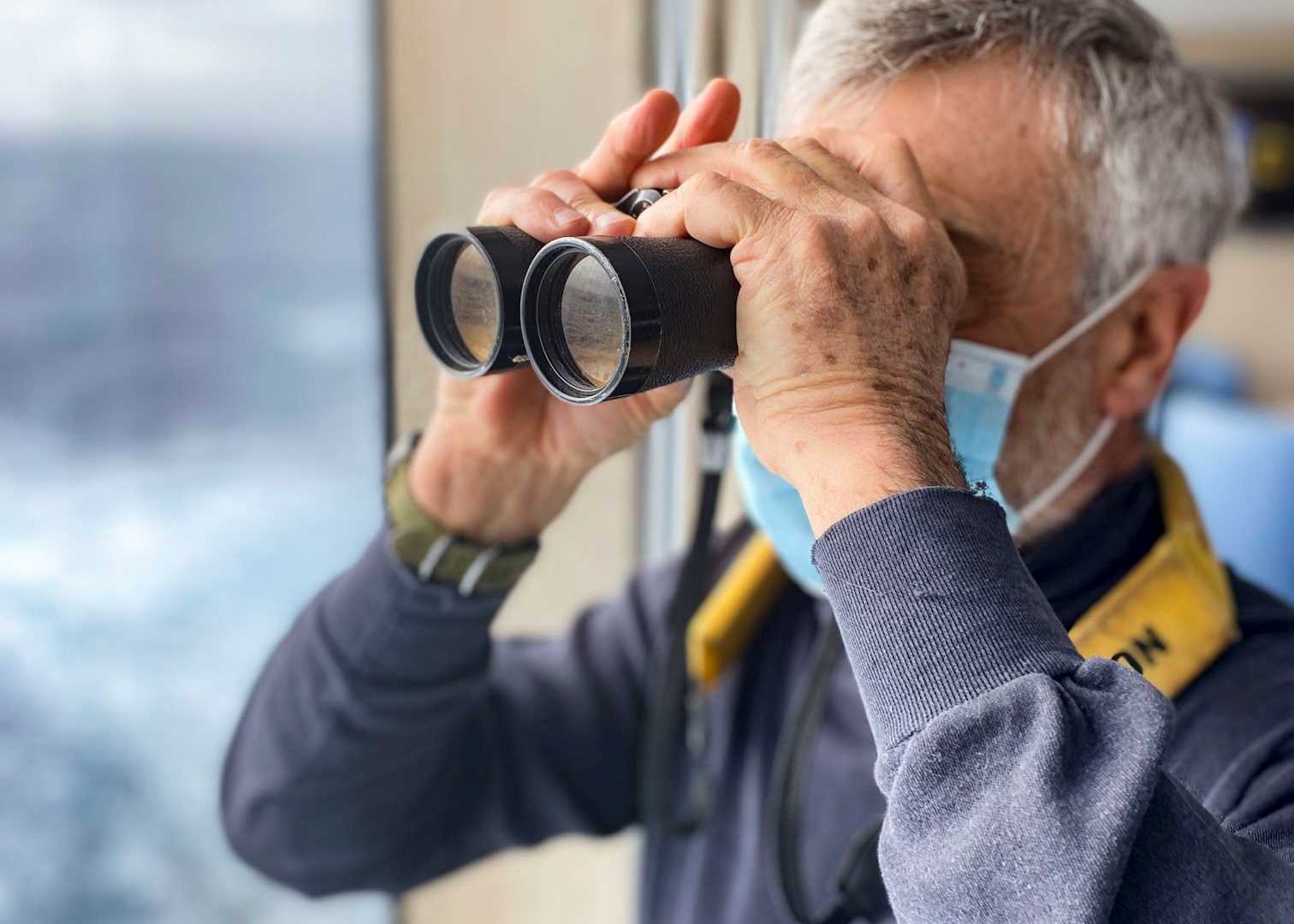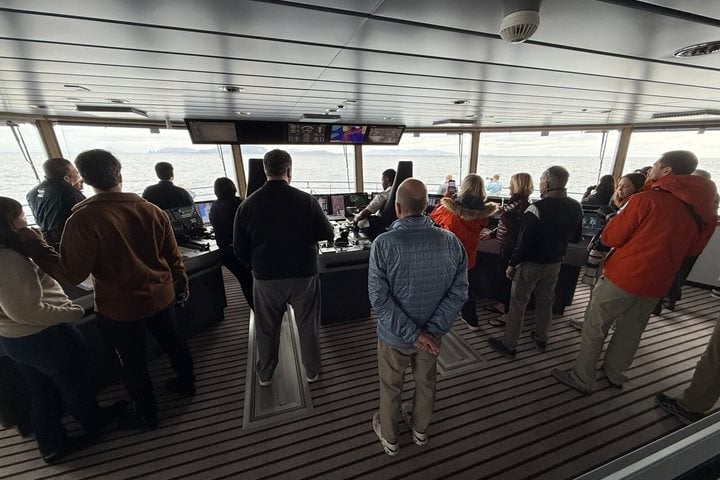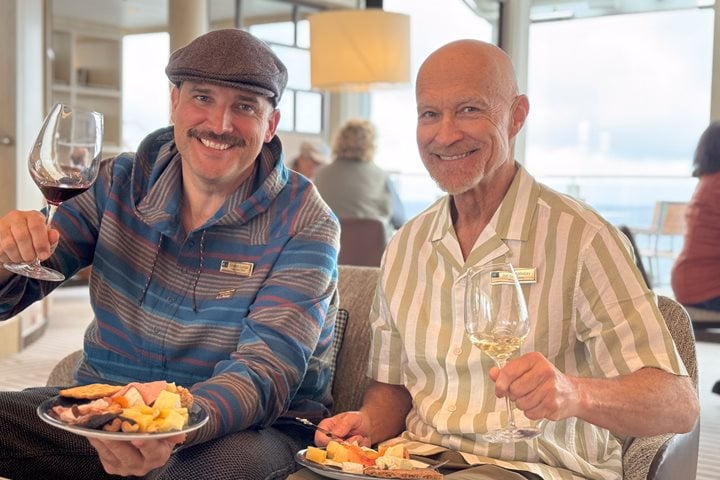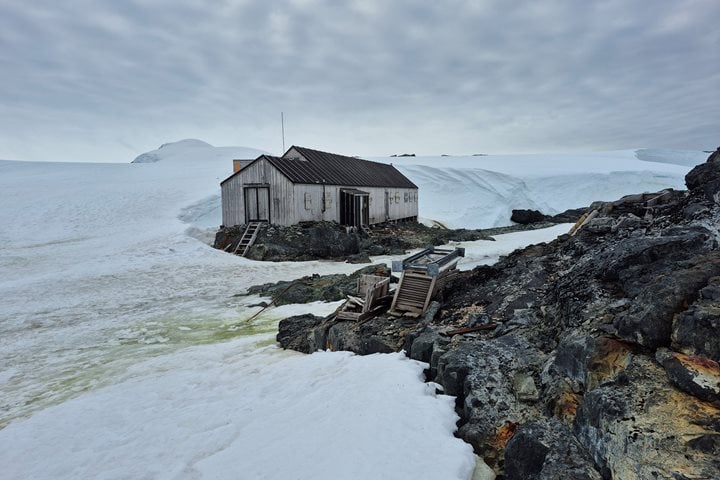As we approach the end of our expedition, there is still much to do and see. Presentations are spaced through the day: naturalist Paul North (“Plankton: The Importance of Small Things”), undersea team Kayvon Malek and Shaylyn Potter ("Expedition Diving: A Visual and Tactile Introduction”) and guest Frank Molony (“Science and Religion: The Parallel and Divergent Paths They Take”).
Sailing north through the Drake Passage escorted by the occasional wandering albatross, their smaller cousins the black-browed albatross, and other pelagic birds, we approach the Beagle Channel. The green nothophagus forest-covered hills contrast with white Antarctic vistas that are very much alive in our memories. New bird species (South American terns, Magellanic penguins, Chilean skuas, dolphin gulls and others) replace their Antarctic relatives. We continue into the heart of Tierra del Fuego and on towards Ushuaia.









